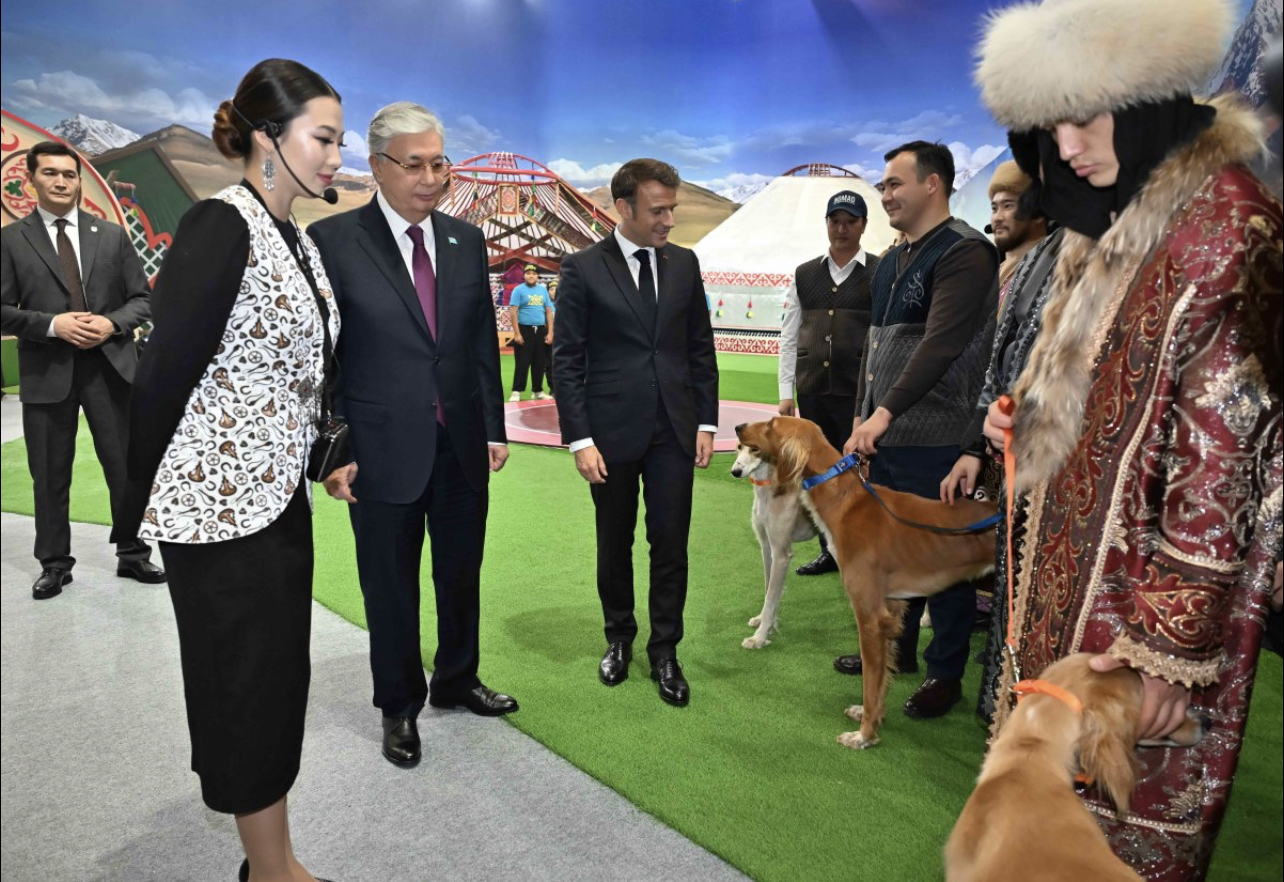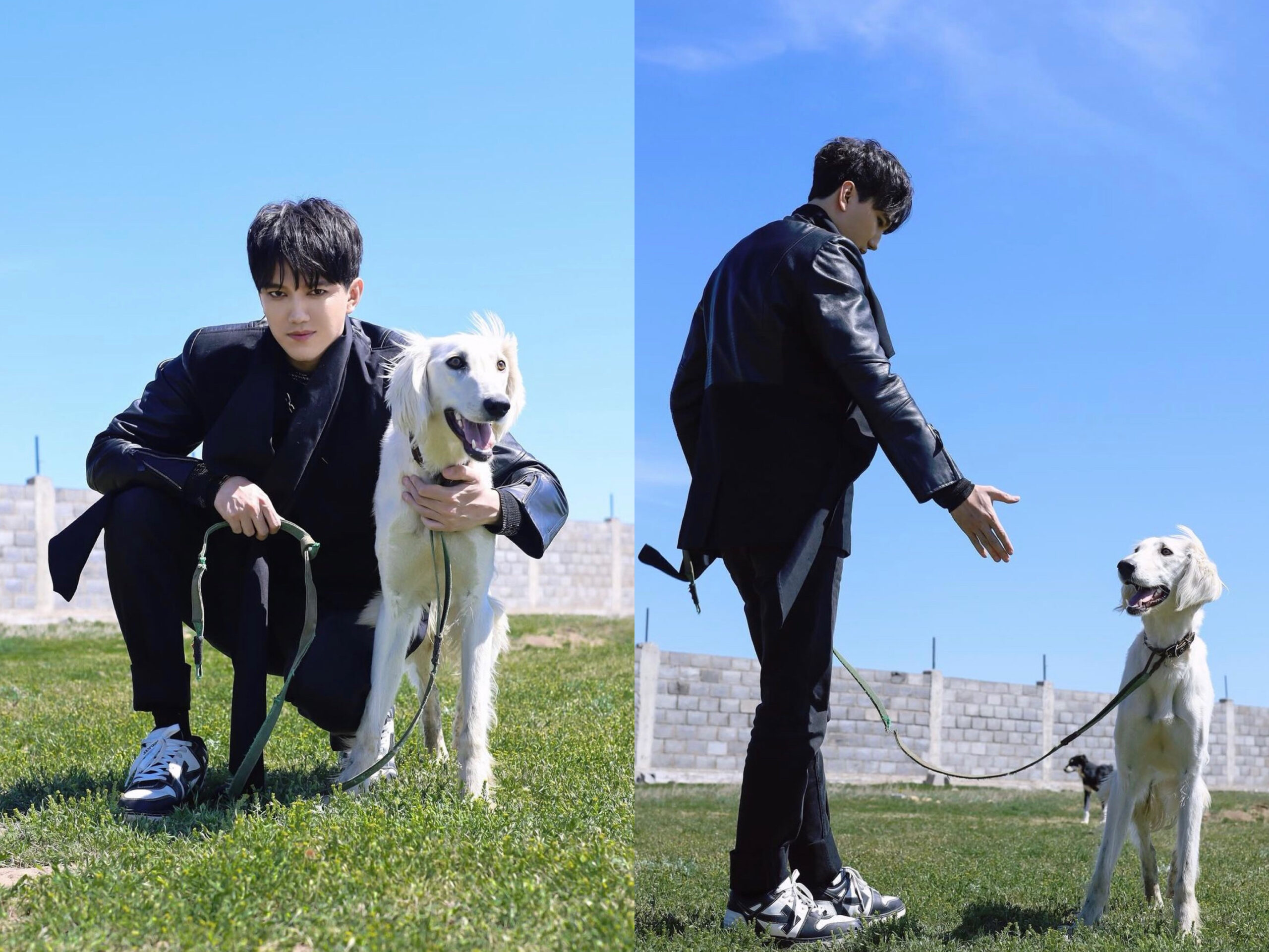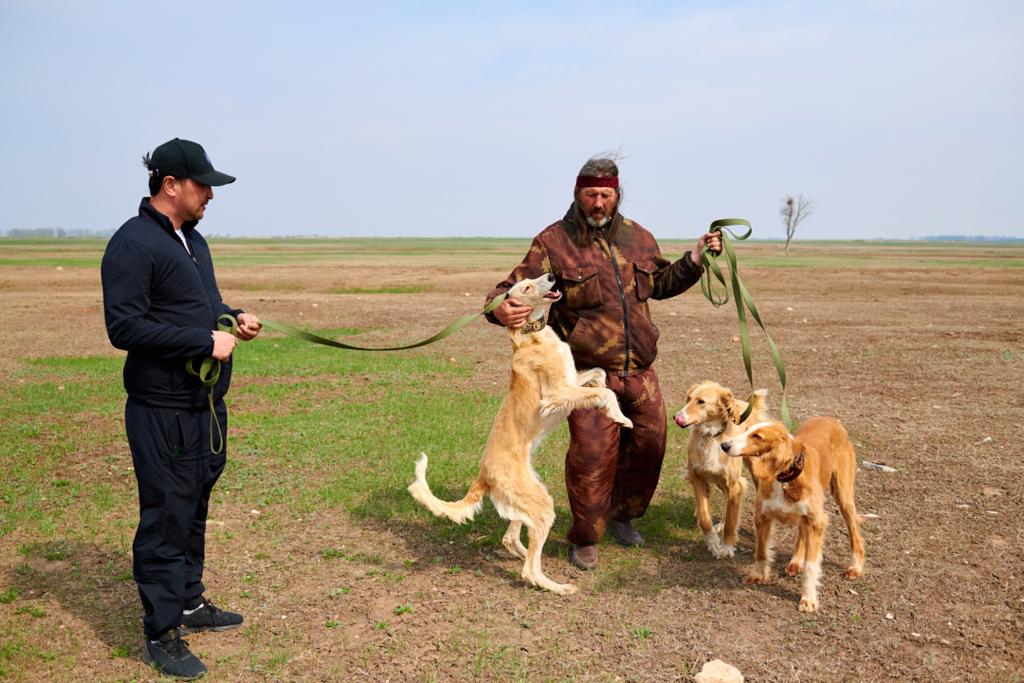Cultural traditions play an important role in shaping national identity. For the Kazakh people, traditions are an integral part of their historical heritage, passed down from generation to generation.

French President Emmanuel Macron gets acquainted with Tazy dogs at the Ethno-village exhibition during his official visit to Kazakhstan. Photo credit- Akorda.jpg
One of the key aspects of Kazakh culture is the nomadic way of life, which has shaped unique customs and rituals. For centuries, Kazakhs have been engaged in animal husbandry, and special importance was attached to hunting with greyhounds and birds of prey, which influenced the everyday life, art, music, and literature of the people.
Today, in the context of globalization and urbanization, there is a threat of losing unique cultural features. This is why efforts to preserve and popularize cultural traditions are crucial.
State and public organizations, such as the Dara Foundation supporting presidential initiatives, are actively working to preserve cultural heritage. One vivid example is the initiative to popularize the Tazy dog breed. Such efforts help to preserve culture and pass it on to future generations.
Zheti Kazyna has deep cultural significance for Kazakhstan, reflecting the values and ideals of traditional nomadic society. In Turkic culture, Zheti (the number seven) is often considered sacred and symbolizes harmony. Traditionally, Zheti Kazyna includes key aspects of Kazakh life: intellect for survival in the harsh conditions of the nomadic way of life, mobility, hunting, protection, family, and culture.

The world-famous singer Dimash Kudaibergen with Tazy dog presented by President Kasym-Jomart Tokayev. Photo credit: Dimash Kudaibergen’s Instagram page
The Tazy is a unique breed of dog and occupies a worthy place in Zheti Kazyna, having historical and cultural significance for the Kazakh people. The very name Tazy translates to “swift, fast,” which corresponds to their natural characteristics. They are born hunters with a calm and majestic character, making them excellent companions in any conditions.
In the early years of Soviet rule in Kazakhstan, the Kazzagotpushnina trust was established, which placed great importance on hunting with greyhounds and birds of prey. According to archival data, in 1938, there were 4,200 purebred Tazy registered in Kazakhstan, contributing significantly to the economy due to the large number of fox pelts.
In the post-war years of the 20th century and later, the Tazy breed was on the brink of extinction. Many hunting and fishing offices closed, and interest in traditional Kazakh hunting types significantly declined.
However, thanks to the work of enthusiasts, the Tazy were preserved and began to be restored. Clubs and associations were created, actively involved in the preservation and breeding of Tazy. Many enthusiasts began breeding Tazy in private kennels, maintaining purebred representatives of the breed. They studied the history and characteristics of the breed, monitored the genetic purity and the health of the dogs.
Enthusiasts sought to raise public awareness of the significance and uniqueness of this breed, drawing attention to the need for its preservation. They held lectures, exhibitions, and other events aimed at popularizing the Tazy. These events not only drew attention to the breed but also facilitated the exchange of experiences and knowledge among owners.

Photo credit: Nomad National Hunting Club.
In recent years, the efforts of enthusiasts have received support from the state. By order of the President of Kazakhstan since 2022, the preservation of Tazy and their international recognition have been taken under the patronage of the Administration of Affairs of the President of Kazakhstan. State support and attention to the Tazy breed contribute to its revival and sustainable development.
Enthusiasts have played a key role in preserving the Tazy breed during difficult times when its existence was threatened. Thanks to their efforts, state support, and the revival of interest in national traditions, the Tazy today continues to live and develop, maintaining its place in the cultural heritage of Kazakhstan.
The preservation and adaptation of the Tazy breed in the modern world requires joint efforts from the state, public organizations, and enthusiasts. Support for kennels adhering to standards of purity and quality, educational initiatives, the use of Tazy in new fields, and international cooperation will help preserve Kazakh cultural heritage and integrate Tazy into contemporary realities.
A careful attitude towards one’s heritage, its study, and popularization is the duty of every citizen of the country. In a rapidly changing world, it is important to remember our roots and do everything possible to preserve them. After all, culture and traditions are the foundation of national identity and the spiritual wealth of the people. By preserving the uniqueness and integrity of the nation, recognizing and valuing our heritage, we can pass it on to future generations.
The author is Assel Shildebayeva, the head of Dara Presidential Initiatives Foundation.
Disclaimer: The views and opinions expressed in this article are those of the author and do not necessarily reflect the position of The Astana Times.


